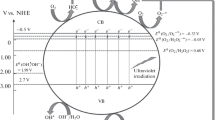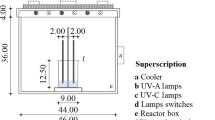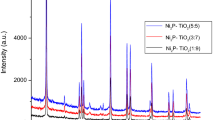Abstract
Diclofenac sodium is an emerging contaminant that can be harmful for ecology and human health. This substance can be degraded by a heterogeneous Photo-Fenton process, CoFe2O4 as catalyst, H2O2 as oxidant and UV radiation. The aims of the work are the comparison of different artificial neural networks to characterize the relationship between diclofenac degradation and H2O2 consumption, with the Total Organic Carbon achieved in the mineralization of the drug and the testing of the selected model capacity to predict the Total Organic Carbon concentration, by employing the reused catalyst. The best performing backpropagation neural network was constituted with a ten neurons hidden layer with sigmoid transfer function and one linear neuron, as output. It was determined that the model can approximate the trend between the input data (Absorbance and H2O2 concentration) and output ones (Total Organic Carbon concentration) when it was validated with data from reactions employing CoFe2O4 for second and third time. The development of these models is of interest due to the consequent reduction of time and costs in experimental work. It represents a study of the evolution of chemical indicators in the treatment of emerging contaminants.








Similar content being viewed by others
Change history
23 August 2022
A Correction to this paper has been published: https://doi.org/10.1007/s11244-022-01691-6
References
Bagheri M, Al-jabery K, Wunsch DC, Burken JG (2019) A deeper look at plant uptake of environmental contaminants using intelligent approaches. Sci Total Environ 651(1):561–569
Elfghi F (2016) A hybrid statistical approach for modeling and optimization of RON: a comparative study and combined application of response surface methodology (RSM) and artificial neural network (ANN) based on design of experiment (DOE). Chem Eng Res Design 113:264–272
Nagy Z (2007) Model based control of a yeast fermentation bioreactor using optimally designed artificial neural networks. Chem Eng J 127:95–109
Álvarez DM, Bálsamo NF, Modesti MR, Crivello ME (2019) Comparison of neural networks an estimation model in yield of monoglycerides from biodiesel by-product,. J Eng Sci Technol 12(4):103–107
Abdul Rahman MB, Chaibakhsh N, Basri M, Salleh AB, Abdul Rahman RN (2009) Application of artificial neural network for yield prediction of lipase-catalyzed synthesis of dioctyl adipate. Appl Biochem Biotechnol 158:722–735
Fan M, Hu J, Cao R, Ruan W, Wei X (2018) A review on experimental design for pollutants removal in water treatment with the aid of artificial intelligence. Chemosphere 200:330–343
Geissen V, Mol H, Klumpp E, Umlauf G, Nadal M, Ploeg M, Zee S, Ritsema C (2015) Emerging pollutants in the environment: a challenge for water resource management. Int Soil Water Conserv 3:57–65
Sousa JC, Ribeiro AR, Barbosa MO, Pereira MFR, Silva AM (2018) J Hazard Mater 344:146–162
Fijalkowski K (2019) Emerging contaminants in sludge (endocrine disruptors, pesticides, and pharmaceutical residues, including illicit drugs/controlled substances, etc.). Ind and Municipal Sludge. https://doi.org/10.1016/B978-0-12-815907-1.00020-9
Lesley J, Byung-Moon J, Min J, Chang Min P, Muñoz-Senmache JC, Hernández-Maldonado AJ, Heyden A, Miao Y, Yeomin Y (2019) Removal of contaminants of emerging concern by metal-organic framework nanoadsorbents: a review. Chem Eng J 369:928–946
Gavrilescu M, Demnerova K, Aamand J, Agathos S, Fava F (2015) Emerging pollutants in the environment: present and future challenges in biomonitoring, ecological risks and bioremediation. New Biotech 32(1):147–156
Directive 2013/39/EU of the European Parliament and of the Council of (2013) amending Directives 2000/60/EC and 2008/105/EC as regards priority substances in the field of water policy (2013). Off J Eur Union 226:1–17
Roberts P, Thomas K (2006) The occurrence of selected pharmaceuticals in wastewater effluent and surface waters of the lower Tyne catchment. Sc Total Environ 356:143–153
Archerad E, Petrieb B, Kasprzyk-Hordernb B, Wolfaardt GM (2017) The fate of pharmaceuticals and personal care products (PPCPs), endocrine disrupting contaminants (EDCs), metabolites and illicit drugs in a WWTW and environmental waters. Chemosphere 174:437–446
Bagheri H, Afkhami A, Noroozi A (2016) Removal of pharmaceutical compounds from hospital wastewaters using nanomaterials: a review. Anal Bioanal Chem Res 3:1–18
Achilleos A, Hapeshi E, Xekoukoulotakis NP, Dionissios M, Fatta-Kassinos D (2010) Factors affecting diclofenac decomposition in water by UV-A/TiO2 photocatalysis. Chem Eng J 161:53–59
Siti F, Wiharto, (2020) Artificial neural network for modelling the removal of pollutants: a review. Eng Appl Sci Res 47(3):339–347
Khataee AR, Vantanpour V, Amani AR (2009) Decolorization of C.I. Acid Blue 9 solution by UV/Nano-TiO2, Fenton, Fenton-like, electro-Fenton and electrocoagulation processes: a comparative study. J Hazard Mater 161:1225–1233
Liu W, Li Y, Liu F, Jiang W, Zhang D, Liang J (2019) Visible-light-driven photocatalytic degradation of diclofenac by carbon quantum dots modified porous g-C3N4: mechanisms, degradation pathway and DFT calculation. Water Res 151:8–19
Gerbaldo M, Marchetti S, Elías V, Mendieta S, Crivello M (2021) Chem Eng Res Des 166:237–247
Shargh M, Behnajady M (2016) A high-efficient batch-recirculated photoreactor packed with immobilized TiO2-P25 nanoparticles onto glass beads for photocatalytic degradation of phenazopyridine as a pharmaceutical contaminant: artificial neural network modeling. Water Sci Technol 73(11):2804–2814
Danks AE, Hall SR, Schnepp Z (2016) The evolution of ‘sol–gel’ chemistry as a technique for materials synthesis. Mater Horiz 3:91–112
Agüera A, Perez Estrada LA, Ferrer I, Thurman EM, Malato S, Fernandez-Alba AR (2005) Application of time-of-flight mass spectrometry to the analysis of phototransformation products of diclofenac in water under natural sunlight. J Mass Spectrom 40(7):908–915
de Boor C (1978) A practical guide to splines. Springer-Verlag, Germany
Desai K, Survase S, Saudagar P, Lele S, Singhal R (2008) Comparison of artificial neural network (ANN) and response surface methodology (RSM) in fermentation media optimization: case study of fermentative production of scleroglucan. Biochem Eng J 41:266–273
Shahbaz K, Baroutian S, Mjalli FS, Hashim MA, AlNashef IM (2012) Prediction of glycerol removal from biodiesel using ammonium and phosphunium based deep eutectic solvents using artificial intelligence techniques. Chemom Intell Lab Syst 118:193–199
Khataee AR (2009) Photocatalytic removal of C.I. Basic Red 46 on immobilized TiO2 nanoparticles: artificial neural network modelling. Environ Technol 30(11):1155–1168
Kasiri M, Aleboyeh H, Aleboyeh A (2008) Modeling and optimization of heterogeneous photo-fenton process with response surface methodology and artificial neural networks. Environ Sci Technol 42(21):7970–7975
Aleboyeh A, Kasiri M, Olya M, Aleboyeh H (2008) Prediction of azo dye decolorization by UV/H2O2 using artificial neural networks. Dyes Pigm 77(2):288–294
Acknowledgements
The authors would like to acknowledge the financial support received from Consejo Nacional de Investigaciones Científicas y Técnicas (CONICET) and Universidad Tecnológica Nacional of Argentina. To Dr. Labuckas Diana of the Instituto de Ciencia y Tecnología de Los Alimentos (ICTA), Facultad de Cs. Exactas, Físicas y Naturales and Instituto Multidisciplinario de Biología Vegetal (IMBIV)-CONICET, Universidad Nacional de Córdoba. And to Eng. Anabella Ortega.
Funding
Universidad Tecnológica Nacional, ASUTICO0007656TC, Dolores María Eugenia Álvarez, Consejo Nacional de Investigaciones Científicas y Técnicas (CONICET).
Author information
Authors and Affiliations
Corresponding author
Additional information
Publisher's Note
Springer Nature remains neutral with regard to jurisdictional claims in published maps and institutional affiliations.
The original online version of this article was revised: Figure 8 has been updated
Rights and permissions
Springer Nature or its licensor holds exclusive rights to this article under a publishing agreement with the author(s) or other rightsholder(s); author self-archiving of the accepted manuscript version of this article is solely governed by the terms of such publishing agreement and applicable law.
About this article
Cite this article
Álvarez, D.M.E., Gerbaldo, M.V., Modesti, M.R. et al. Artificial Neural Networks for Modelling the Degradation of Emerging Contaminants Process. Top Catal 65, 1440–1446 (2022). https://doi.org/10.1007/s11244-022-01674-7
Accepted:
Published:
Issue Date:
DOI: https://doi.org/10.1007/s11244-022-01674-7




